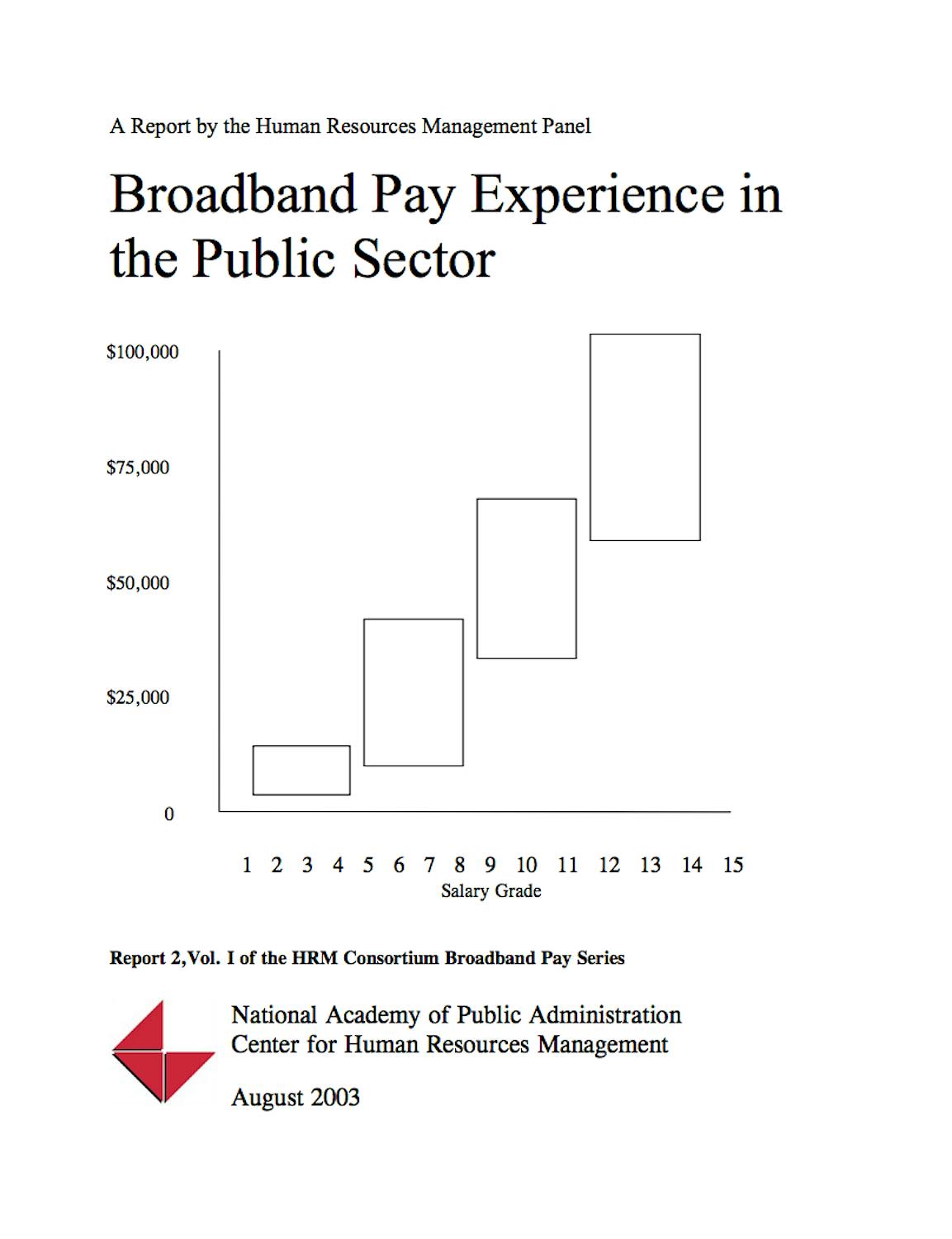
Broadband Pay Experience in the Public Sector
The Academy's Human Resources Management Panel (HRM Panel) released a series of reports, from 2003 to 2004, on the adoption and implementation of broadband pay systems in the public and private sectors. The first report focused on the private sector’s experience with broadband pay and identified emerging trends in compensation policy and practices used by private industry. In this second report, the HRM Panel benchmarked most of the federal and state organizations that had been given authority to test the broadband approach to paying civil servants.
The third report assessed the effectiveness of these approaches and recommended options for compensation systems that the federal government could consider. Coupled with the other two reports in the series, this second report explores the public sector's experiences with broadbanding and the lessons learned from those experiences.
Click the button below to view the View Study Report.
View ReportKey Findings
The broadbanding approaches being designed or modified take a very holistic approach not only to the specific broadband pay design but also to related human resource systems and the identification of expectations and goals. Pay-for-performance is a key factor and performance expectations are closely linked to an organization’s strategic objectives. Many federal organizations are setting department-wide performance standards and specific levels required for “meets expectations” and top performance ratings.
Managers have more responsibility for measuring performance, setting pay and managing their workforces. Costs are managed by limiting salary budgets and establishing stringent performance standards and controls that limit progression through the range of a band. Most organizations control the rate of progression from the range’s mid-point upward.
Recommendations
This report is structured around the topics discussed with the organizations featured and which are part of the public sector approach to implementing broadbanding. Areas of significant agreement and different approaches to the same issue are highlighted. A matrix of responses to the major topics is provided. Individual responses of the surveyed organizations are published in the companion Case Study. The organizations covered in this report reviewed and confirmed the information the panel is publishing about them. Readers interested in a specific issue can find summary information in this report on each organization’s experience under the topic heading and in the matrix of responses to the major topics. Those who want to gain a detailed perspective on how individual organizations construct their broadbanding programs can find the individual descriptions quite helpful.
